Daniel Millhouse's Blog, page 7
May 7, 2016
New Forms of Media Influence Politics
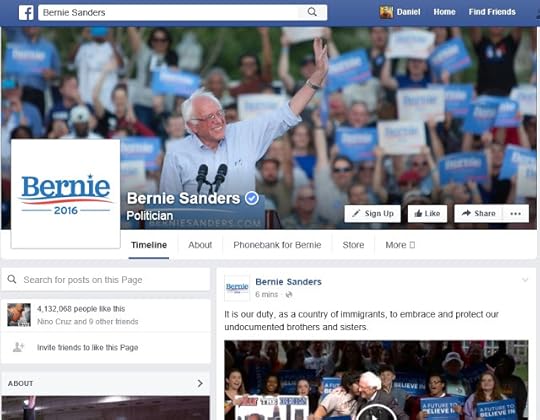
With the advancement of technology, every President of Presidential candidate that has been ahead of the curve has seen substantial results in their favor if they embrace it before their counterparts do.
FDR embraced radio through his fireside chats. JFK understood how television worked compared to Nixon. Obama embraced a grass roots campaign through the internet.
Even the current candidates have turned to a fairly new media...social media. Current Democratic candidate Bernie Sanders rose from a fringe candidate status to a serious contender for nomination, winning many states in the process. Republican candidate Donald Trump has turned to Twitter to get his message out and gain followers in the process.
Whenever a new medium is released it quickly catches the attention of the American public. The youth are the largest group to jump on new media forms. This is often a key demographic that a political party hopes to capture because not only do they represent a significant portion of the present day voters, but they also represent the future of their political parties for years to come.
At a time of uncertainty, FDR used the 30 fireside chats on radio to promote the Emergency Banking Act in response to the banking crisis, to talk about the recession, New Deal initiatives, and update Americans on our stance during World War II. These radio addresses kept America as calm as possible during one of the darkest times in our history.
How did this work in FDR's favor? He became the only President to serve more than two terms (elected four times), destroying Hoover, Landon, Willkie, and Dewey in the national elections.
Later television would capture America. This worked in the favor of John Kennedy who participated in the very first televised presidential debate against then Vice President Richard Nixon.
Those who watched the debates on television saw a young, handsome looking man who exuded the appearance of confidence. On the other side of the stage they saw Richard Nixon who was rumored to be sick, was noticeably sweating on air, refused to wear makeup, and sported a five o'clock shadow. Nixon was considered the better debater and those who listened to the first debate on the radio thought he won. Those who caught the debate on TV though felt the opposite was true.
Nixon had a slim lead in the polls at the time of the debate, but that was the last time he was considered to be the front runner.
The result of the debate was that presidential staffs learned that they had to strategize on how their candidate and their message would appear on television. Teams of people actually focused on how the President looked now when they appeared in public.
By 2008, Democratic presidential candidate Barack Obama adapted his campaign to reach those on the internet. Using his website as well as other websites that were created in support of his campaign, Obama was able to reach a youth vote out there without spending a ton of money. His grassroots campaign was something unseen before as Republican candidate John McCain used traditional outlets of media such as television and radio to reach his base. Social media was still growing at the time and the majority of Americans weren't using it yet. Those who were also got to see the early signs of what it could do.
This year, two candidates have not only utilized social media...they've dominated in it.
Democratic candidate Bernie Sanders was considered a fringe candidate at the time he announced his candidacy. At the time he entered the race, he was only polling at 2 to 5 percent of the total Democratic votes. Hillary Clinton wagered her campaign on name recognition and the use of news media. Sanders on the other hand put together one of the best social media campaigns every seen in politics and rose up to be a serious challenger to the presumed nominee.
Sanders' Facebook followers went from several thousand to over 4 million. His posts on Facebook and Twitter have earned thousands of shares and retweets. At the time of this posting (May 7), Clinton is beating Sanders by over two hundred delegates and has won 26 states to his 19. Though Sanders is behind, his results are not bad for someone considered a far-shot. In fact for those under 40 years old, he is considered the favorite. His message has also been mostly adapted by Clinton to prevent him from rising farther in the polls.
On the Republican side, Donald Trump understood the power of social media better than his other opponents. Ted Cruz's social media campaign was weak. Marco Rubio's made him come across as boring compared to the youthful and energetic image he was hoping to maintain. Jeb Bush's social media presence was abysmal. John Kasich's social media presence seems to be ghostly as his posts are rarely shared compared to the other candidates.
Trump touched on a the theory that "all press is good press". Often appearing to go "nutty" on Twitter in the late hours, Trump comes off no different than some of those online looking to pick fights with other strangers. He tweeted ugly images of his opponents and their family. He retweeted quotes and endorsements from those who come off as being racist or fascist. He often airs out his opinions without his campaign staff getting a chance to chime in on whether the Tweet should go be tweeted.
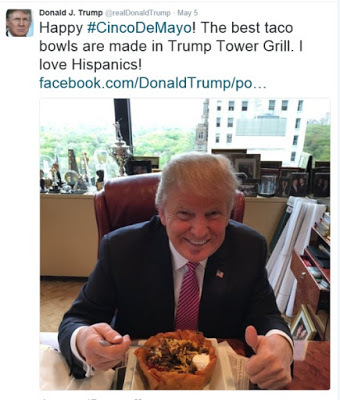 Even with that said, he still continues to gain more followers, many of whom feel anger towards what they consider as dirty politics ironically.
Even with that said, he still continues to gain more followers, many of whom feel anger towards what they consider as dirty politics ironically. But one thing can be said about his social media use...he knows how to gain more supporters using it. Trump understands that social media can be a major factor in gaining supporters and getting his message out there, just as Berne Sanders does.
On the flipside, social media can also tear down a candidate. Democrat Anthony Weiner is a prime example of this.
Perhaps one of the brightest Democrats when it came to policies and strategy, he was about as dumb as a horny teenager when it came to social media. On his Twitter account, he tweeted pictures of his genital area on the internet. Perhaps he didn't realize that this would be seen by the world, but that's not an excuse. His actions knocked him out from probably being a future presidential candidate to someone who could no longer even when a race for mayor of New York City, especially when he was caught again being stupid on social media during his mayoral campaign.
As technology continues to develop it should be interesting on what new form of media will develop and then in turn be used by politicians to help further their careers. Maybe some form of virtual reality will be used to transport people in their homes to feel like they're standing by a candidate on stage as they give a speech.
Whatever new form of media develops, it's almost a guarantee that a future president will use it to win a seat behind the Resolute Desk of the Oval Office.
Published on May 07, 2016 18:23
May 2, 2016
Alien Life May Already Be Extinct
 Photo Credit: Big Ear Radio Observatory and North American AstroPhysical Observatory
Photo Credit: Big Ear Radio Observatory and North American AstroPhysical Observatory We look to the stars hoping to find signs of life elsewhere in our universe. Our search includes listening for audio and video signals, and we have entire agencies such as SETI who are dedicated to this search. The problem is we may have already missed our window to meet extraterrestrial life.
Human civilization is approximately 10,000 years old. Sounds like we've been around for a long time, but Earth is estimated to be a little over 4.5 billion years old. Even if aliens have taken the time to explore and/or visit Earth, they may have done it at a time when humanity wasn't even around. Maybe dinosaurs were the species at a time when alien life visited our planet and if this is a possibility it is possibly safe to assume that alien life overlooked Earth because they didn't deem that our planet had intelligent life.
With the advancement of technologies in the past 100 years alone, we ourselves have the ability to destroy ourselves. Crossing our fingers, hopefully this is something we as a species will never do, but one has to wonder...if another alien species developed at a slightly quicker rate than humanity, could they have already destroyed themselves before we ever had the chance to meet? It is possible that intelligent life that has existed elsewhere has already run into their own extinction.
Even if an organization like SETI found proof via a signal, by the time we could send a signal back or travel to the planet where it originated from, that species could be long gone. Signals can travels hundreds and even thousands of years. It's possible that the species could even be extinct by the time we first detected a signal.
This possibly has already occurred. In 1977, Jerry R. Ehman discovered what is now known as the "Wow! Signal" at the Big Ear radio telescope located at Ohio State University. The signal lasted for 72 seconds and is called the "Wow! Signal" because on the printout he wrote the word Wow. Since then SETI has not been able to find another signal similar to this.
"We should have seen it again when we looked for it 50 times. Something suggests it was an Earth-sourced signal that simply got reflected off a piece of space debris," said Ehman who doubts it came from extraterrestrial life. The signal came from a location that is estimated to be 17,600 light years away. While Ehman may be right, it is also possible that the species that created it is long gone. This doesn't mean that intelligent life elsewhere doesn't exist. It just means that it just doesn't exist now.
Another possibility is that by the time alien life does get around to being able to visit Earth, we may have already destroyed ourselves through nuclear war or climate change. Will they find archeological evidence of our existence? Possibly. They may also find a barren planet covered in sand. Maybe this is what happened to alien life if any existed on Mars.
Yet even another possibility that should be looked at is if we are the most advanced civilization in the nearby universe currently. The conditions could be right for alien life to develop into an intelligent species, but we may be years ahead of these aliens. We could be looking for signs of their life when in turn, they should be looking for signs of us.
With a universe that is billions of years old and contains billions of stars and planets, it's hard to believe that we're alone. It's just not hard to believe that other intelligent life may have already lived and died off.
Published on May 02, 2016 15:36
April 27, 2016
MLB Going Overboard with the Shift
 Picture of Paul Goldschmidt taken by Daniel Millhouse
Picture of Paul Goldschmidt taken by Daniel MillhouseA trend occurring in Major League Baseball is currently being used too often and to the point where it could even be detrimental to the teams. The shift.
These days, teams are stacking one side of the field with extra fielders to cut down on the possibility of hits falling in for particular pull hitters. Most of the time the shift is applied to left-handed hitters because teams are nervous to pull the first baseman too far from his base. When a lefty steps up to the plate, a shortstop (sometimes the third baseman) will shift over to where the second baseman would normally be set up at. The second baseman would then shift over to shallow right field to prevent line drives and bloops from falling in.
Now the shift isn't a new concept. It was applied in the 1920's against Cy Williams and once again used against Ted Williams in 1946. In the 1990's, current Cubs manager Joe Madden who was a bench coach for the Angels back then, asked the Angels manager Terry Collins if he could apply the shift against Ken Griffey Jr. and the rest is history.
Sabermetrics came into play as well as every mathematician started analyzing spray charts of hitters and coming up with ways they believed to stop pull hitters. Early adopter of sabermetrics, general manager Billy Beane saw his Oakland A's have some playoff success with a low payroll and other teams jumped on the sabermetrics bandwagon. This lead to the shift being used more frequently. How much more frequently? In 2010, the shift was used in 2,464 times. In 2014...13,296 times. There were increases in 2015 and 2016 has seen even more shifts being used in the small sample size that is available.
The problem is the shift is not the perfect answer to teams reducing runs. In fact it could actually be hampering them. Teams rarely practice the shift defense at practices or during Spring Training and confusion can often hit the players on the field about what their roles are. This is amplified when there are runners on base.
Many times when a lefty hitter is at bat and the shift is applied, a base runner could find himself at an advantage. Third basement don't practice turning double plays as a middle infielder so basic grounders that would have led to two outs lead to only one instead.
Other times a grounder that is hit into the shallow right field area leads to the runner taking TWO bases because a pitcher's first reaction is to move to first base. The shortstop/third baseman who is covering the left side of the field covers second base on a grounder to the right and now the runner finds himself with no one covering third. In a foot race between a runner and a fielder who also has to receive a throw from one of the other fielders, the base runner will almost always win unless they're a Molina brother.
Extra bases, especially if there is only one out usually equals runs.
"In my opinion, you shouldn't be able to have three infielders on one side of the infield," Atlanta Braves manager Fredi Gonzalez once said in an interview with MLB.com. "That, to me, is an illegal defense."
The rule book barely touches on the placement of players on the field. Other than where the catcher and pitcher are placed, the rules don't mandate where the other seven fielders have to play. Now this is not to say that the shift should be made illegal, but taking a look at some of the evidence, it's easy to say that it's overused and isn't saving the runs that the MLB managers think it does. In fact a study done in 2014 says that at most, the shift may have save a total of 27 runs in the 13,296 times it was applied.
The shift has also taken away some big moments in player's careers. Nathan Eovaldi, a pitcher for the New York Yankees was tossing a no-hitter on April 25 this year. Taking it to the seventh inning, the Texas Rangers Nomar Mazara hit a simple ground ball that should have been out number one in the inning. Instead it went through for a base hit. It wasn't a hard hit grounder and what made the situation worse was that it would have been right at the shortstop if everyone was playing where they normally do. This isn't the first time something like this has happened. In fact it happens quite often.
In a bizarre incident, San Diego Padres Andrew Cashner was angry that a hitter on the St. Louis Cardinals actually tried to defeat the shift by bunting. In a game that Cashner pitched on April 22, the fielders shifted to the right side, leaving the third basemen manning the area between where the third baseman and shortstop normally cover. The hitter bunted the ball down the line and almost managed turning it into a hit, but it just barely went foul. Cashner who sprinted from the mound to the line and picked up the ball yelled over at the hitter and started pounding the ball in his glove. He clearly didn't like the bunt. TOUGH. If your team employs the shift then be ready for hitters to find ways to work around it and adapt. If the shift is fair play, so are bunts and going the other way with a pitch. Don't be a poor sport and whine when a hitter doesn't volunteer to hit into your shift.
Baseball like many sports is an evolving game that adapts with the times. Unfortunately in this case it also appears to be taking the heart out of the defensive game. The intentions of the founders of the game, all several people who have some partial credit in inventing baseball, never meant for the fun to be taken out of the game. This is a concept that has been taken too far and to an extreme. I wouldn't suggest banning it, but I do suggest that sabermetrics not be used as the be-all end-all in baseball.
Published on April 27, 2016 17:50
April 22, 2016
RIP Prince...Another Legend Passes
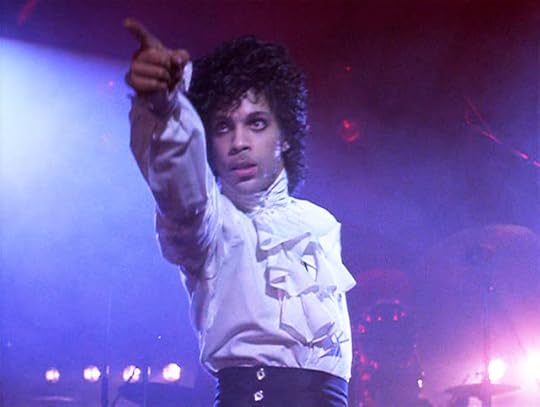 Screencap of Prince from his movie Purple Rain
Screencap of Prince from his movie Purple RainAt this point in time it does appear that God is trying to create a super band as another music legend passed away in 2016.
Prince Rogers Nelson, one of the few people who could get away with being called by only a single name (and at one time just by a symbol) mysteriously passed away in the elevator of his Minnesota home at age 57. News sources such as Fox News are reporting that he died of the flu while other sources are stating flu-like symptoms as a possible cause.
Whatever the reason, it feels almost unbefitting of such a rock legend to die by something that used to get me out of school for a day or two. People can die from complications due to the flu, but you usually think of people from third world countries or someone in their 90's.
Prince may have been known for being a singer, but he was so much more. Once, when asked how many instruments did he know how to play, he responded, "Thousands." On his first album he is credited with playing 27 different instruments. Now while some people might think this is just boasting, Prince was actually able to back this up. When people think of guitar legends they think of names like Hendrix, Van Halen, Satriani, but Prince is also on the level of these greats. He also played the bass, the piano, drums, the Linn drum, and much more.
Also not known to everyone is that Prince was one of the greatest song writers of his generation. He had released 104 singles in his life, 27 of which hit number one on the music charts. What a lot of people don't know is that he would constantly write so much music that he would give it to other artists to use. He wrote a large portion of Morris Day & the Time's music, and music for Sheila E., Sheena Easton, Vanity 6, Stevie Nicks, The Bangles, Sinead O'Connor, Chaka Kahn, Madonna, Pattie LaBelle, Tom Jones, and Alicia Keys.
For The Time he wrote "Jungle Love". For Stevie Nicks he wrote the music for "Stand Back" and she based her lyrics of his hit song "Little Red Corvette". For the Bangles he wrote "Manic Monday". Sinead O'Connor covered his "Nothing Compares 2 U". Alicia Keys recorded his song "How Come You Don't Call Anymore". For Chaka Kahn he wrote "I Feel for You". He even wrote the entire soundtrack for Tim Burton's Batman.
He was the most overall successful music artist in the 1980's, and tenth most successful in the 1990's. Overall he sold over 100 million albums in his lifetime, won 7 Grammy's, a Golden Globe, and an Academy Award. In 2004 he was inducted into the Rock and Roll Hall of Fame. "There are many kings…but there is only one Prince," said Alicia Keys when she inducted him in.
 During a contract dispute with Warner Bros. Prince changed his name to the unpronounceable symbol know as Love Symbol #2 (pictured right). During this time he would be referred to as "The artist formerly known as Prince." He claimed that they took his name, trademarked it, and used it to make themselves money. Later he changed it back to Prince and would sign with Arista Records.
During a contract dispute with Warner Bros. Prince changed his name to the unpronounceable symbol know as Love Symbol #2 (pictured right). During this time he would be referred to as "The artist formerly known as Prince." He claimed that they took his name, trademarked it, and used it to make themselves money. Later he changed it back to Prince and would sign with Arista Records.Anyone that lived through the '80s and/or '90s usually can name at least one song that they like even if they weren't a fan of Prince. "I Wanna Be Your Lover" was his first hit single and was released in 1979, but he had so many more. "1999", "Little Red Corvette", "When Doves Cry", "Purple Rain", "Raspberry Beret", "Kiss", "Batdance", "Partyman", "Thieves in the Temple", "The Most Beautiful Girl in the World", and more in '80s and '90s. This doesn't include songs like "Guitar" which shows off how good of a lead guitar player he was and "Musicology" which came out in the 2000's.
On February 4, 2007, Prince played the halftime show for Super Bowl XLI which many called the best halftime show ever. He performed "Let's Go Crazy", "Baby I'm a Star, "Purple Rain" and then performed cover songs of "We Will Rock You" by Queen, "All Along the Watchtower" by Bob Dylan, "Best of You" by the Foo Fighters, and "Proud Mary" by CCR. An estimated 140 million people watched the performance on TV.
He was so musically inclined that he had his whole house wired so he could record music from any room of his home whenever he felt inspired.
A lot of people didn't know that Prince was a philanthropist and supported many social awareness issues. He wrote a song called "Baltimore" after the murder of Freddie Gray and the riots that followed. He's donated millions of dollars anonymously to build libraries, help people start businesses, and save families from losing homes.
When asked why he never moved to Los Angeles or New York instead of living in Minnesota, he would cite that the state was his home and that it was where he belonged.
Another aspect of Prince's life that he was well known for was the amount of women he dated. Madonna, Carmen Electra, Apollonia, Kim Bassinger, Vanessa Marcil, Susana Hoffs, Misty Copeland, Ananda Lewis, Heidi Mark, and Marvin Gaye's daughter, Nona. His music was often centered around romance so it was no surprise that he found it easy to woo some of Hollywood's prettiest women.
With his death, it should be interesting now to see what the future holds for Prince's music. One of the oddities of his career was that he recorded so much music that he would produce albums that he would only keep for himself and lock away in a vault at his home. There's rumored to be hundreds of unreleased songs that people who helped him work on these songs said should be hits as well. He also recorded multiple music videos and made several movies that have yet to see the light of day. So with his death, the public could possibly see a flood of his work finally be released in the coming years.
Whether you're a fan of rock, R&B, pop, funk, or soul, Prince's work certainly reached you at some point. His work has inspired other music artists after him including Andre 3000, Beyoncé, Lady Gaga, Bruno Mars, Rihanna, and more. He even inspired the costumes of the Hamilton: The Musical.
Published on April 22, 2016 19:59
April 14, 2016
The Primary Process Needs to be Fixed
 This is a screencap of the delegate distribution in Wyoming despite Sanders winning by over 12% of the state's popular vote
This is a screencap of the delegate distribution in Wyoming despite Sanders winning by over 12% of the state's popular voteIf you have a pulse and pay even the remotest attention to politics in the United States, it's safe to say that there is something about the Presidential Primary process that confuses you. If you watch interviews with people who are in charge of the process in their own states, even some of them aren't exactly sure how it's run. The problem is this process is alienating the average person from getting involved in the elections process let alone even caring about it.
So many people believe the process is rigged and examples in recent weeks have shown this to be true. In the Democratic Primary held in Wyoming, Bernie Sanders won the popular vote by over 12 percent, but walked away with 7 delegates compared to Hillary Clinton's 11 delegates. One of Clinton's supporters on CNN when asked if they felt this was fair answered, "Oh well."
Trevor Noah asked Debbie Wasserman Schultz on The Daily Show if this is a rigged process and she refused to answer the question directly. When pressed she made the excuse that superdelegates have been around for years and that nothing was wrong with the distribution process.
The process is broken. Superdelegates don't care what their constituents want. In the case of Clinton, after the very first primary held in Iowa nearly ended in a dead tie between Sanders and her, it was announced on every mainstream news station that she was up by over 400 delegates already. How is that not rigged? From day one it's very easy for a person to come to the conclusion that their vote doesn't count since Clinton was basically spotted 400 plus delegates. California is the largest state in the union and has 475. These 400 plus superdelegates that are now up to 477, means that 477 people have just as much power as 39 million residents of the largest and most diverse state in the country.
This creates disenfranchisement among a party and those who already feel disconnected to an overly complicated political system. The problem will never be fixed with people like Wasserman Schultz who are running the Democratic National Committee because there is a clear conflict of interest. She was a campaign manager for Hillary Clinton's campaign in 2008 and one of her best friends. The pro-Clinton Super Pacs are all run by people who also have superdelegate votes. All clear conflicts of interest especially against a candidate that doesn't have, nor want a Super Pac.
There is a DNC rule that states: "The Chairperson shall be responsible for ensuring that the national officers and staff of the Democratic National Committee maintain impartiality and even-handedness during the Democratic Party Presidential nominating process.”
Henry R. Muñoz III, who was President Obama's top fundraising manager is now the Chairperson for the Democratic Party's financial operations. He organized a fundraiser for Hillary Clinton in San Antonio, Texas which is a clear violation of the impartiality rule. Wasserman Schultz when pressed whether she would reprimand and/or fire Muñoz for this avoided the question. Some speculation is because she herself had connection to this particular fundraiser. The leaders of DNC have made up their mind from day one that Clinton will be their nominee.
Everyone who holds high positions in both the Democratic and Republican National Committees are content to say that's just how the whole system works and nothing can be done about it. Of course something can be done about it, but both party chairs don't want to. You can't use the excuse that the system has been this way for a while, so what can you do?
The obligation to the American people should be to fix and simplify the process so it encourages more people to vote and be interested in the whole process. It can be done.
First, California should be moved up in the Primary schedule. The most diverse state in the union with the most delegates shouldn't be voting on the very last day. All of the Southern states voted before a single West Coast state (with exception to Nevada) even got to cast a single vote. The Primary schedule should be shuffled evenly across the country.
We have seen this personally affect Sanders' campaign because much of his base is within these Western and Midwestern states. By the time they get to vote, the appearance of a Clinton victory already seems inevitable especially with the addition of superdelegates added to the mix, discouraging voters in the West from even showing up to the polls.
Secondly, make the state by state Primary process delegation distribution purely based on the popular vote of that state. For example, if a state has 100 delegates and Candidate A earns 62 percent of the state's overall popular vote and Candidate B earns 33 percent, then Candidate A should earn 62 of the delegates and Candidate B should earn 33. This prevents issues such as what happened in Wyoming.
Thirdly, make the Primary vote an all-day process just as the National Elections are. Not between 5pm to 7pm or similar examples to this that have small voting windows. The law gives people the guaranteed right to vote on National Election days by making sure an employer grants their employee the appropriate time to get to their precinct and vote (although this isn't always observed by many employers these days), but this law doesn't grant the same right on Primary days.
A good example of this was what happened in Arizona. Garnering a stronger base among younger voters, Sanders' supporters found themselves in long lines when they showed up to their precincts. The law states that as long as a voter is in line in time their vote will count even if they haven't been able to reach the voting booth before the precincts are scheduled to close. With the precincts cut down to 60 from the 200 that existed in 2012 despite the projected voter count to rise from 200,000 in 2012 to 800,000 this year, lines in Arizona were longer than ever before. Instead of counting every voters ballot and following the law, the precincts were closed while people were still waiting in line. This gave the advantage to Clinton who won 56 percent to Sander's 41 even though he was projected to be the winner.
This decision to close the polls hurt Sanders because younger voters tend not to rush to the polls the moment they open. They're more likely to show up halfway along the process. Also because it was held on a weekday, younger people tend to be at school or stuck at work for the first portion of the hours that the Primary is open.
On the other hand, Clinton does better with older people and business owners/managers. Older people, especially those who are already retired, tend to show up early, often right when the precincts open. If they aren't retired, they are often in positions that they can cut out early for the day or schedule around the beginning of the Primary.
When precincts closed despite not letting those in line cast a ballot, Sanders lost any chance he had to win the state. Having an all-day long Primary allows for more of a chance for people to show up to cast their ballot.
Fourthly, I'm not even 100 percent against the concept of a superdelegate. There are just way too many. Limit superdelegates to surviving ex-Presidents and ex-Vice Presidents (unless they are running). Currently that would leave Democrats with superdelegate votes going to Jimmy Carter, Walter Mondale, Al Gore, Barack Obama, and Joe Biden. Bill Clinton because of a conflict of interest would lose his superdelegate vote. On the Republican side this would leave George H.W. Bush, Dan Quayle, George W. Bush, and Dick Cheney. Beyond that, we don't need anymore. Call it a benefit for winning the office of President in the past.
Fifthly, get rid of Super Pacs. They muddle up the process and make people with money count more than the average American. They also lead to bribery when they buy delegates votes in contested conventions. As CNN reported, Super Pacs are working on delegates now, offering them vacations, money, and other gifts if they cast a ballot for the nominee that the Super Pac wants if the conventions are contested. This year both the Democrats and Republicans could easily have contested conventions. Plus Super Pacs buy so much media that they can sway an election if their commercials reach the voters the way they want them to, once again meaning the voice of those with money mean more than the average voter.
Lastly, get rid of the electoral college. College Political Science professors let alone high school teachers have trouble explaining the process and why the district lines are the way they are. With gerrymandering rigging the whole process as it is, district lines are completely unfair. Of course you won't be able to ignore districts as a whole because they are needed to determine the members of the House of Representatives, but draw the lines cleanly and fairly, and leave the Presidential process open to an overall popular vote by the entire state.
In a time when globalization is now taking place, the electoral college process finds itself antiquated.
Make the elections more "user-friendly". Every American should be able to have their vote count just as much as the next person. Make every state a popular vote state that has an all-day long Primary. Get rid of 99 percent of superdelegates. Shuffle the states every election year so all states feel as their votes count as much as those in other states.
Taking these steps will help simplify the process and get more people personally invested in the process. Voter turnout in 2012 was at 57.5 percent for those who were eligible to vote, but other countries in the world have 80 plus percent turnouts. Americans are so jaded in the process that they believe that their individual votes no longer count. Get them re-involved in the process and let every possible voice be heard.
Published on April 14, 2016 17:00
April 12, 2016
What Happened to...Sitcom Idols
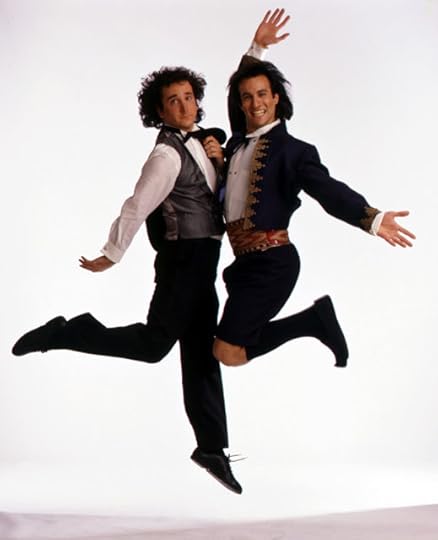
Television has engrained itself into the fabric of America. People grew up watching iconic characters for year after year, almost feeling like they personally know the characters from the TV shows they watched. When you break down each decade in America for the past 70 years, one of the first things you think of when you look at each decade from a cultural aspect is the TV shows that aired during these decades. The problem is a show would run for a limited amount of time and even though each hit series had a finale, it would leave you with the question...what happened to (insert character name here) after the show ended.
A recent trend in television and now Netflix is to continue these series years later. Disney Channel has Girl Meets World which continues the storyline of Cory and Topanga from Boy Meets World. Netflix has Fuller House which continues the hit show from the '80s and now surrounds DJ, Stephanie, and Kimmy's storylines who were originally the kids in Full House. Frasier sort of filled this "what happened to" scenario with Frasier Crane. Even though it was a spinoff, it took place for 11 seasons after Cheers ended.
But what about all those other characters out there that we all loved or hated that we never got an answer to the "what happened to..." question? Well I present to you a short list of hit characters and what I think may have happened to them. Not everyone of them has a peachy-keen story after their show ended.
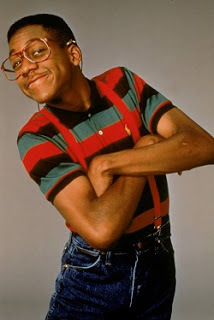
1. Steven Urkel (Family Matters): Though socially awkward throughout the show and obsessed with the Winslow family, Urkel was a genius when it came to science. He in invented the Urkel Bot that actually displayed feelings and could be said to have reached sentience because it feel in love with Laura. He invented Boss Sauce which would work with his Transformation Chamber to change someone into someone socially different and even eventually led to the clone of Stefan Urquelle. He had entered negotiations to sell his invention of exploding veggies to the US Military and even invented a teleportation pad that zapped him to Paris.
So what happened to the genius? Well my take is that he did indeed eventually marry Laura Winslow. Happy ending right? Wrong...
Diving deeper into working on his inventions Urkel uses his previous military contacts to invent new types of weapons for them to use. He probably had something to do with that ray gun that when fired at people would give them the sudden urge to poop. I imagine since this gun is similar to the gun that makes you vomit, he probably had a hand in this too. Over time, he secretly amasses a fortune as the lead scientist for a weapons manufacturer. Being a pacifist and rarely seeing him anymore, Laura eventually divorces Urkel when he's not there for her when Carl Winslow is killed in a police standoff in Chicago. Laura takes half his fortune and Urkel dives deeper into isolation and the last we heard, he's working on a bomb that makes the nuclear bomb look like a spit-wad gun.
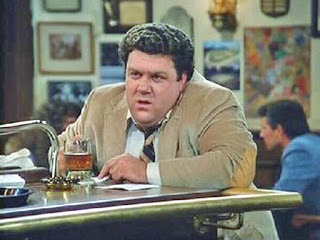
2. Norm Peterson (Cheers): Famously known as Norm! from the hit show Cheers, he was the most famous customer of the bar of the same name. Running tabs that ran into the thousands of dollars, Norm would often banter back and forth with Cliff Clavin and Frasier Crane. The last appearance of Norm on a television show was the spinoff of Frasier when Cliff Clavin is having a retirement party and Frasier along with his family fly to Boston for a conference, running into the outgoing postal worker.
So what happened to the lovable bar patron? Well he's dead.
How drastic you say! Yes, but take into account how much he drank, his diet, his weight, his lack of physical exercise, and his general outtake on life, he certainly drank himself to death by the time he hit his mid-60's. How did he die? Sclerosis of the liver. Not being able to give up his beer drinking habit, no doctor in their right mind would put him on the donor list unless he changed his habits. Unfortunately Norm couldn't and he passes away in St. Eligius Hospital, famously nicknamed St. Elsewhere which was another '80s show that George Wendt also guested on as Norm Peterson. In his will, he leaves a small amount of money to help pay off his bar tab with Cheers.
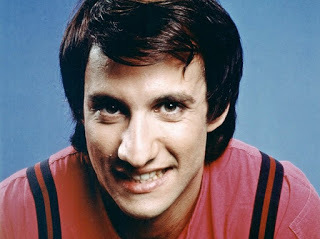
3. Balki Bartokomous (Perfect Strangers): The distant cousin of Larry, Balki intrudes on Larry's kindness and the pair become roommates in Chicago. The twenty-two year old is naïve and Larry is the one that takes it upon himself to help Balki adjust to the new settings of America which are far beyond that of the primitive country of Mypos. Originally the two work as clerks at the Ritz Discount Store, but by the time the series ends, Larry is a news reporter and Balki draws a weekly comic strip based on his stuffed sheep. Larry marries Jennifer and they have a kid named Tucker. Balki rushes into marriage with Mary Anne and the two have a kid named Robespierre.
So what happened to the lovable foreigner? Well he's now in charge of his own rebel group looking to overthrow the Myposian government on behalf of Islam.
Yes, I went dark on you. During his years in America, Balki tried his hardest to become more American-like, but never quite gets it. As many people do when they age he becomes more conservative and he reverts back to the teachings of his family while he grew up on the Mediterranean island just between Turkey and Greece. A culture that often is referred to being centuries in the past (so much so that it is alluded that pterodactyls are still alive there), the country has self imposed a ban on sciences and modern day electronics. Only one phone exists on the island for example. What is never said is that the island is under the control of an Islamic group that restricts technology within the country.
After 9/11 and other terrorist events, Balki starts becoming more fanatical with the cries of the people on his island to overthrow American values that he leaves his wife and child and returns to his homeland. Through his knowledge of American culture and his early weapons training as a child on Mypos, Balki rises among the ranks of the Muslim rebel group and overthrow King Ferdinand. Balki has resented the king since season 2 because the king tasked Balki in selling land to an American corporation to turn a large chunk of the island into a toxic dump. After seizing control of the government, Balki personally condemns King Ferdinand to death and rises quickly on the American most wanted list.
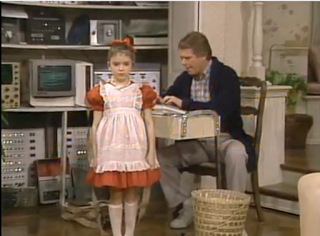
4. Vicki Lawson (A Small Wonder): A robot created by Ted Lawson, Voice Input Child Identical (V.I.C.I.) was engineered to help children with physical handicaps. Ted brings the robot home to mature within a real family and as a cover, gives her the name Vicki to blend in with the rest of the family. She is 10 years old in appearance and during the shows 4 season run, Ted provides her with upgrades to continue to pass a human girl.
So what happened to this monotone robot? She's been dismantled by her evil twin Vanessa.
As the son, Jamie Lawson grew up, he found himself becoming more interested in the prospect of having a human-looking robot always around him and willing to do whatever he said. By the time they reach their college years, Jamie moves across the country to a small one bedroom apartment and takes Vicki along with him. At first Vicki gives him trouble because she no longer wishes to live in a closet, but Jamie refuses to share his personal space with him. He suggests that they could "share" a bed if she agrees to his sexual advances, but she rejects him. Remembering that his father also created Vanessa, Vicki's evil twin that was more human-like and spoke without the monotone voice, Jamie has Vanessa reactivated and sent to his apartment.
As the evil twin who is to take Vicki's place, Vanessa blindsides Vicki and deactivates her. Vicki is disassembled and Vanessa lives out the rest of her robot life as Jamie's servant/lover under the guise of Vicki.
On a side note, Jamie is the ancestor to a robotics expert named Noonian Soong who uses the V.I.C.I. plans to be the foundation of the three androids he creates, Data, Lore, and B4.
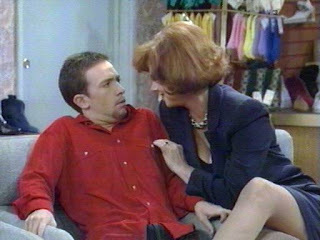
5. Bud Bundy (Married...With Children): Son of the famous Al Bundy, Bud was supposedly college educated, but never displayed this in the real world. The one thing that motivates him is sex. Maybe this is because of the women that his older sister, Kelly, would bring home and hang out with (played by actresses such as Lisa Boyle and Jennifer Lyons). When we last see Bud, he graduated college and worked for the Illinois DMV.
So what has Bud been up to since then? He became a porn producer, but is on the downside of his career now.
Married...With Children left off in 1997 at the end of the VHS era and going into DVD's. This was the perfect time for electronically inclined Bud Bundy to have a brain storm to shoot soft core porn starring Kelly's friends. This actually would work for a while since in previous episodes they don't require a lot of money to be motivated to do things that most people think would be overstepping their sexual boundaries. Also Bud is able to put on a good act and pretend that things are nicer/better than they really are or at the very least a professional quality like when he directed the workout video starring Kelly.
During this time, it would even be possible to believe that he might win an Adult Video News (AVN) Award and come into some minor fame.
The kick-in-the-head is with the free porn available on the internet, Bud's career will eventually crumble when he has a hard time making money from video sales. He'll glide by for a little by selling his clips online, but eventually this too will lead to a decline in sales, especially when Kelly's friends get older.
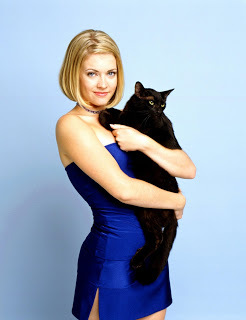
6. Sabrina Spellman (Sabrina, the Teenage Witch): After growing up and learning to be a witch with the help of her aunts Zelda and Hilda, Sabrina eventually graduates college and moves back into her childhood home along with her best friends Roxy and Morgan. From there she went to work for an entertainment magazine called Scorch and left her fiancé at the alter in favor of Harvey, her high school sweetheart.
So what happened to the good hearted witch? She tried to take over the world, only to be thwarted.
A couple of years after the television show ends, Sabrina will catch Harvey in bed with Roxy, who was about the only friend of Sabrina's he didn't date during the television show run. Furious, Sabrina's hair darkens instantly from blond to brunette and she cast a spell on them. The spell placed on Roxy places her on a stake and she is burned alive like a witch during the Salem Witch Trials. Harvey on the other hand instantly finds himself thrown into a dark room and is now transformed into the pet dragon underneath the staircase of a family called the Munsters.
With her fragile psyche now snapped, Sabrina decides to rule the world, appearing before a UN meeting and declaring that if they don't all pledge allegiance to her she will launch all the nukes in the world, thus killing off every living thing.
Displeased that she revealed that she was a witch to the mortal world, Drell (Penn Jillette) appears in front of the UN and throws Sabrina into the Other Realm. Once there the two of them battle, but it is apparent that being such a young witch, her powers are nothing like Drell's. He tosses her into a dungeon, where she is locked in a pillory for the rest of her eternal life for her indiscretions. Hilda and Zelda are thrown into the same cell with her, chained to the wall and voiceless since they are still considered responsible for Sabrina's tutelage.
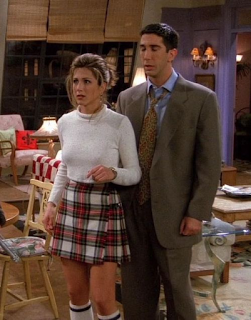
7. Ross and Rachel Gellar (Friends): After years of pining for Rachel, Ross finally dates her on and off for the entirety of the 10 seasons of the show. At one point they even marry each other, although by drunken accident in Las Vegas. Toward the end they have Emma and Rachel must choose between being with Ross, the man who is willing to do anything to be with her, or her dream career in the fashion capital of the world, Paris. She chooses Ross and it is alleged that they will spend the rest of their lives together in New York while Monica and Chandler have moved out of the city, and Joey has moved to California to advance his Hollywood career. Sadly no one seems to care about Phoebe.
So what happened to Ross and Rachel after the show ended? Nothing.
After a couple of years raising Emma and Ross' son from his first marriage, Ben, Rachel snaps after Ross brings home another dinosaur bone and starts talking about the history of the particular dinosaur it belongs to. She hated dinosaurs, let alone science and has had enough of his geekiness. What makes matters worse is that she just rented the movie Captured at her local Red Box which starred Joey Tribbiani. This is when she comes to the realization that she played it safe--too safe--and settled for Ross. On a whim, she has Phoebe come over to her apartment to watch the kids and in the same fashion as when she flew out to London to stop Ross' second wedding, Rachel flies across country to declare her love for one time boyfriend Joey.
Finding him at his beach front apartment, she realizes that he is in a serious relationship with his neighbor Alex Garrett. Rachel pleads with Joey to leave Alex for her. Realizing that the two of them could be a power couple, the famous actor and his fashion mogul girlfriend, and also thinking back to how serious his feelings were for Rachel when he lived in New York, Joey accepts her plea and the two move into together...and live happily ever after.
*All photos are publicity photos or screencaps used in this post are from each character's respective TV show
Published on April 12, 2016 18:02
March 30, 2016
Who is the Best James Bond?
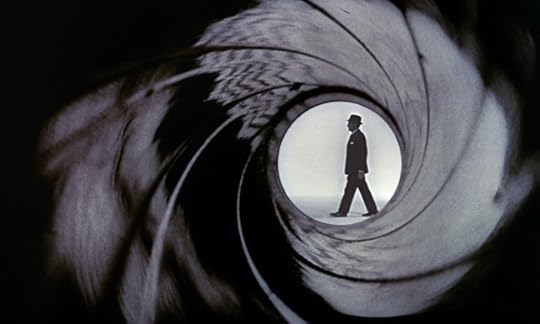
With Daniel Craig's run as James Bond having come to an end this is a good time to reflect on those who have played the top secret agent of MI6. Over the course of 54 years, there have been six men that have worn the tuxedo and have played the role of the James Bond, starting with Dr. No in 1962 and ending (so far) with Spectre last year.
Various rumors have placed Idris Elba as the next Bond, rewriting the Bond-verse to portray that the name James Bond, just like the 007 designation, are just titles. I don't necessarily like this. While I think Elba is a great actor and I would be fine with him occupying the role of 007, I don't think he should be James Bond. I'd rather he make the part his. Make it James Bonds' successor. I believe this would expand on the Bond-verse rather than restrict it to the adventures of just one man. Besides, Ian Fleming wrote an obituary for James Bond in You Only Live Twice which stated his father's name was Andrew Bond. This would make Bond a family name and not a title.
Others that have been considered for the James Bond role in the past include Dick Van Dyke (seriously), Michael Caine, Mel Gibson, Adam West, Henry Cavill, Burt Reynolds, Cary Grant, Clint Eastwood, and even Liam Neeson. I personally believe that Clive Owen would have been a good James Bond and he even played a Bond-like role in the Pink Panther movie starring Steve Martin.
In the meantime, I give me my list of the best Bond portrayals in order from best to worst...
1. Sean Connery: He starred in 6 Bond movies, but most people will swear he starred as Bond in more movies than that. This is perhaps Connery's most famous role of his legendary career. He also starred in two of the top Bond movies as well (From Russia with Love, Goldfinger). Close your eyes for a second and mentally think about whose voice you hear in your head. I'm betting it belongs to Connery. From Russia with Love is the best example of his work.
2. Pierce Bronsan: He played 007 four times in his life between 1995-2002. He was actually the role during the 1980's, but declined it to star in a similar role as a private investigator as the titled character in Remington Steele television show. His portrayal of Bond revived the series that was declining after Connery left the role. The World is Not Enough is his best example of his work.
3. Roger Moore: Moore has played the role of James Bond more on film than any other actor. He officially took over for Connery in 1973 and continued until 1985. His downside is that he occasionally looked more business like than secret agent like at times. Off camera, Moore felt so self conscious about how he looked while running that all scenes that featured Bond running utilized a stunt double. What was worse was that he also suffered from Hoplophobia--a fear of firearms. A View to Kill is the best example of his work.
4. Daniel Craig: Probably the most believable other than Connery physically as a secret agent, Craig was supposed to play a younger James Bond during his formative years as a new secret agent. Problem was that he was already 38 years old when he took up the mantel (Connery for example was 32 years old). He also didn't appear too similar to the other actors who played Bond. Craig on the flipside starred in the highest grossing Bond movies of all-time. Starring in 4 movies, Craig's best example of his work is in Casino Royale.
5. Timothy Dalton: The star of two Bond movies, Dalton portrayed a more emo-like Bond instead of the playboy type that Moore played. It was hard to like him as James Bond. Maybe it was a symptom of the time period, the movies were filmed in the late 80's. His best work would be Licence to Kill.
6. George Lazenby: Perhaps the forgotten James Bond actor. Ask your friends to name all the actors who have played 007. Unless they are a big Bond fan, I bet they forget about Lazenby who starred as Bond once. Following Connery, he already had a hard role following the best Bond, but Lazenby was also open about his hatred of playing the part. He quit after one movie and Connery retook the role again once more. You can check out Lazenby's only performance in On Her Majesty's Secret Service.
Published on March 30, 2016 16:26
March 26, 2016
Millhouse MLB Season Predictions
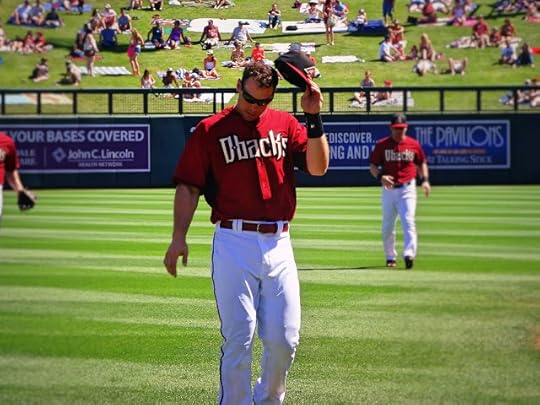 Photo of Paul Goldschmidt taken by Daniel Millhouse
Photo of Paul Goldschmidt taken by Daniel MillhouseIt's that time of year again. My fantasy baseball draft has passed and I can make my predictions for the season without someone trying to up-bid me during my auction draft. With baseball season so close, I give you my predictions for the 2016 Major League Baseball Season...
American League:
MVP: Manny Machado
Cy Young: Marcus Stroman
Rookie of the Year: AJ Reed
Manager of the Year: AJ Hinch
Fireman of the Year: Wade Davis
Comeback Player of the Year: Marcus Stroman
Breakout: Miguel Sano
Silver Sluggers: Catcher-Salvador Perez, 1B-Chris Davis, 2B-Jose Altuve, 3B-Manny Machado, SS-Carlos Correa, OF-Mookie Betts, Lorenzo Cain, Mike Trout, DH-Nelson Cruz
Notes: While I have listed Stroman as the winner for the Cy Young Award, I can easily see several other pitchers in the running including Garrett Richards who I believe will have a breakout year, Chris Sale, and Dallas Keuchel for a repeat. Also, I believe AJ Reed won't start the year at the Major League level, but Jon Singleton will prove unworthy and Reed won't be in the minors too long.
AL East: 1. Toronto Blue Jays, 2. Baltimore Orioles, 3. New York Yankees, 4. Boston Red Sox, 5. Tampa Bay DEVIL Rays
AL Central: 1. Detroit Tigers, 2. Kansas City Royals, 3. Chicago White Sox, 4. Cleveland Indians, 5. Minnesota Twins
AL West: 1. Houston Astros, 2. Seattle Mariners, 3. Texas Rangers, 4. ANAHEIM Angels, 5. Oakland A's
Notes: With their pitching staff back to healthy, I believe that the Blue Jays will take a step closer to their first World Series appearance since the days of Joe Carter. I also believe that while the Royals will have another good year, the Tigers will stay healthy enough finally to just pull out first place in the Central. The White Sox would be another possible contender, but I don't think they quite pull it out this year. The Astros will repeat in the West and the Mariners will finally show some of the potential some thought they would have last year.
National League:
MVP: Paul Goldschmidt
Cy Young: Johnny Cueto
Rookie of the Year: Trevor Story
Manager of the Year: Dusty Baker
Fireman of the Year: AJ Ramos
Comeback Player of the Year: Jose Fernandez
Breakout Player of the Year: Aaron Nola
Silver Sluggers: Catcher-Buster Posey, 1B-Paul Goldschmidt, 2B-Dee Gordon, 3B-Nolan Arenado, SS-Brandon Crawford, OF-Bryce Harper, Giancarlo Stanton, Andrew McCutcheon, Pitcher-Madison Bumgarner
Notes: I believe that now that he is in a pitcher's park and has a stellar defense behind him, Cueto will finally step up beyond the role of all-star pitcher and into the role of Cy Young Award winner just past Clayton Kershaw. While I imagine 99% of people are predicting that Corey Seager will be the rookie of the year and I agree he will probably have a good year as well, I believe Story will take advantage of taking the shortstop spot from Jose Reyes. Story won't let go and will benefit from playing in Colorado. Domingo Santana will also be another player to watch for Rookie of the Year, especially if he earns the leadoff spot for the Brewers. I believe that Jose Fernandez will be the best comeback story, but Anthony Rendon and Adam Wainwright won't be far behind. Lastly, Aaron Nola will show that he deserves to be called an ace despite being on a horrible team. He won't rack up the wins, but he will have a low ERA and WHIP along with some quality starts.
NL East: 1. New York Mets, 2. Washington Nationals, 3. Miami Marlins, 4. Atlanta Braves, 5. Philadelphia Phillies
NL Central: 1. Chicago Cubs, 2. Pittsburgh Pirates, 3. St. Louis Cardinals, 4. Milwaukee Brewers, 5. Cincinnati Reds
NL West: 1. San Francisco Giants, 3. Arizona Diamondbacks, 3. Los Angeles Dodgers, 4. San Diego Padres, 5. Colorado Rockies
Notes: The focus has been on some of the signings and trades Arizona made this offseason. While good, this is an even year which seems to be lucky for the Giants. The Diamondbacks have a better rotation that is built for the postseason though. The Cubs also come into this season with a lot of hype, but is also helps that they have two horrible teams within their own division (Reds, Brewers). The Mets will also benefit from having two horrible teams in their division, but at least the Braves have potential with all the minor league stars they traded for the past couple of years. We could potentially see the Braves step up next year like the Astros did in 2015.
Playoffs:
AL: Wildcards-Baltimore Orioles and Kansas City Royals; AL Championship-Toronto Blue Jays vs. Houston Astros; AL Champion-Houston Astros
NL: Wildcards-Arizona Diamondbacks and the Pittsburgh Pirates; NL Championship-San Francisco Giants vs. New York Mets; NL Champions-San Francisco Giants
World Series: Houston Astros over San Francisco in 7 games
Published on March 26, 2016 02:30
March 10, 2016
Us vs. Us: Elite Pit Poor Against Each Other
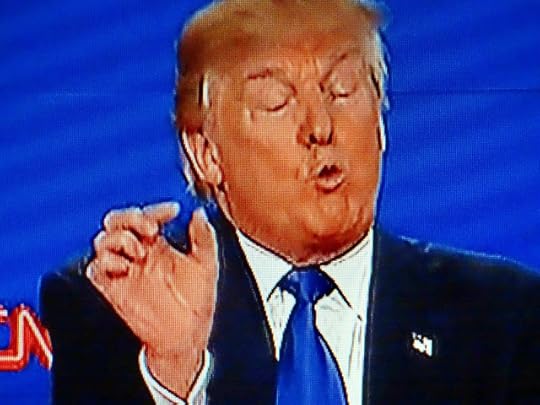 Pictured: Donald Trump who argues minimum wage is too high
Pictured: Donald Trump who argues minimum wage is too highWages in America have fallen far behind the rate of inflation and the cost of living. The last time minimum wage was raised was in 2009 when the Fair Labor Standards Act (FLSA) raised it to $7.25 an hour. Some states and other localities such as cities have raised their minimum wage levels higher than this, but not to level it once was.
Many argue against it including Donald Trump who said on MSNBC's Morning Joe, "But I think having a low minimum wage is not a bad thing for this country." He argued that most people wouldn't have to worry about it if they just did a good job working hard.
Others argue against Presidential candidate Bernie Sanders' proposal to eventually raise it to $15 over multiple years. In these arguments, they use fast food workers as the example of a minimum wage worker. Out of the 3.3 million workers making the federal minimum wage or lower in America (tipped employees, student-employees, and more make under the federal level), 1.5 million are in the food industry according the Bureau of Labor. This doesn't take account for those that are making minimum wage in areas that are above the federal level, but pay a higher minimum wage due to cost of living in those particular regions (e.g. California is $10 an hour). Approximately 35 percent of food industry workers in total in American make minimum wage or less.
The strawman argument made is that if minimum wage is raised to $15, the majority of those that will benefit will be teenage kids working for an employer such as McDonalds. The average minimum wage employee is 35 years old according to John Schmitt, the senior economist with the Center of Economic and Policy Research in Washington DC. Just over 88 percent are over 20 years old and over 50 percent are over 30 years old. Fifty-four percent of minimum wage employees work full-time and another 32 percent work half-time (up to 34 hours a week). This also doesn't take account of those making just over minimum wage, but under the $15 an hour. This includes retail store managers such as Gamestop who pay head store managers $12 an hour to run businesses that make $2 million a year and carry a low payroll percentage already. They too would benefit from the raise.
Those that utilize the strawman argument online often make comparisons with teenage fast food workers to professions such as EMT's and military people who make under $15 an hour as well. This is a false argument though. To start, EMT's and other medical professionals making under $15 would benefit from a minimum that is raised to $15. Second, there is no scenario saying that fast food workers deserve it more or that they would receive the pay raise, but not those in the life saving professions. Thirdly, they too have been the victims over the years of not receiving raises that correlate with the cost of living.
Instead of people pitting fast food employees against these noble professions, why are they not banding together to fight those who have benefitted from their hard work? The average CEO makes 350 times more than their average employee, let alone one that makes minimum wage for that company. The average CEO in America makes $12.3 million a year which is almost $5 million a year ahead of the second highest paying country in the world to CEO's, Switzerland. Walmart's CEO, Doug McMillon makes $25.6 million a year not counting his company paid cars, paid air travel, and other benefits. This is 1,133 times higher than the average full-time Walmart employee who makes $22,591, or about $10.86 an hour.
This has ballooned from the 20-1 CEO to average pay ratio from 1950. This also doesn't account for other board members and top brass within these companies who also saw their incomes balloon higher than the average employee. While CEO's saw their pay rate rise as high as 1,750 percent since 1950, the average worker hasn't seen the same pay hike.
In 1968, the minimum wage was $1.60 which doesn't sound like a great deal, but when adjusted for inflation, has as much buying power as someone who make over $21 an hour today. That means if you make under $21 an hour today, you are no better off than a minimum wage employee was 48 years ago. You would have to make $41,680 a year ($21 an hour at full-time) to have the equal buying power of a minimum wage employee in 1968.
Today, 63 percent of Americans make under $41,680. That is 63 percent of Americans who make wages that have not kept up with inflation and the cost of living. There are teachers, first responders, business managers, and many other professions that make less than that. This means the face of person that has knocked down by the elite shouldn't be a fast food employee, but instead should be someone such as a soldier, teach, or EMT, for they too have been gypped.
While those who the strawman argue against minimum wage being raised to $15 an hour love posting pictures of fast food employees as the face of their argument, those who make less than $21 should ban together and counter this argument.
It's not one or another when it comes to fast food employees versus someone such as an EMT. The elite use this example to pit the poor against the poor. This takes the heat off what they themselves make. If you make under $15 an hour, you should direct your anger at those who run your place of business and not those who make around the same amount.
Published on March 10, 2016 19:07
March 8, 2016
Daylight Saving Time Looms
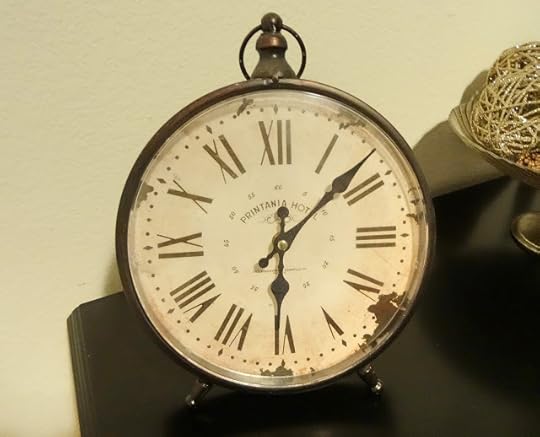
March 13 will bring the beginning of Daylight Saving Time in California and most of the other American states this year and tons of Americans will wake up the next morning needing an extra shot of caffeine to get by the day. At 2am that morning, the clocks will magically jump to 3am.
Benjamin Franklin was a proponent of DST to save on lamp oil and candles. It was also meant to preserve every hour of daylight possible for people such as farmers to work their land.
In present day, Daylight Saving Time was originally thought to help when it comes to preserving electricity and cutting costs on American's utility bills. In a study about Indiana's energy use, it was found that since they adopted Daylight Saving Time in 2006, energy use actually went up. Pollution from car emissions went up as well as it was found that more people hit the roads while it was still light out. From a health standpoint, the loss of an hour of sleep creates an increase of heart attacks, car accidents, and injuries at work because of drowsiness during the week that follows the time change.
Assemblyman Kansen Chu, D-San Jose has introduced a bill that would get rid of the Daylight Saving Time Act of 1949 in the state of California. If passed, when the clock falls back in November, it will never spring forward again. States such as Hawaii and Arizona already do not observe Daylight Saving Time, so a precedent has already been set in the United States.
DST is outdated and should be overturned. While people would lose the benefit of gaining an extra hour of free time or sleep in the fall, they don't have to worry about losing an hour of sleep in the spring. It would be most beneficial for the United States to have a permanent standard time instead.
Published on March 08, 2016 18:15



